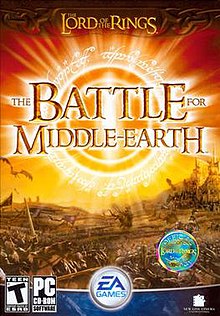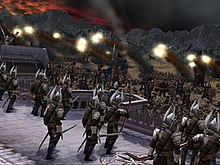
Gondor is a fictional kingdom in J. R. R. Tolkien's writings, described as the greatest realm of Men in the west of Middle-earth at the end of the Third Age. The third volume of The Lord of the Rings, The Return of the King, is largely concerned with the events in Gondor during the War of the Ring and with the restoration of the realm afterward. The history of the kingdom is outlined in the appendices of the book.
In J. R. R. Tolkien's fantasy writings, Isengard is a large fortress in Nan Curunír, the Wizard's Vale, in the western part of Middle-earth. In the fantasy world, the name of the fortress is described as a translation of Angrenost, a word in the elvish language Sindarin, which Tolkien invented.

In J. R. R. Tolkien's high fantasy The Lord of the Rings, Harad is the immense land south of Gondor and Mordor. Its main port is Umbar, the base of the Corsairs of Umbar whose ships serve as the Dark Lord Sauron's fleet. Its people are the dark-skinned Haradrim or Southrons; their warriors wear scarlet and gold, and are armed with swords and round shields; some ride gigantic elephants called mûmakil.
Middle-earth Enterprises, formerly known as Tolkien Enterprises, is a subdivision of the Embracer Freemode division of Embracer Group and formerly a trade name for a division of The Saul Zaentz Company. The subdivision owns the worldwide exclusive rights to certain elements of J. R. R. Tolkien's two most famous literary works: The Hobbit and The Lord of the Rings. These elements include the names of characters contained within as well as the names of places, objects and events within them, and certain short phrases and sayings from the works.

The Lord of the Rings: The Third Age is a 2004 role-playing video game developed by EA Redwood Shores for the PlayStation 2, Xbox and GameCube. A turn-based tactics version of the game was developed for the Game Boy Advance by Griptonite Games. The game was published on all platforms by Electronic Arts, and released worldwide in November 2004.
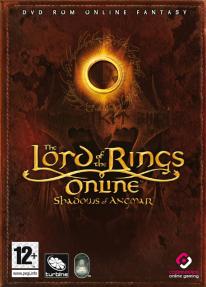
The Lord of the Rings Online is a massively multiplayer online role-playing game (MMORPG) for Microsoft Windows and OS X set in J. R. R. Tolkien's Middle-earth, taking place during the time period of The Lord of the Rings. Originally developed by Turbine, the game launched in North America, Australia, Japan, and Europe in April 2007 as The Lord of the Rings Online: Shadows of Angmar. Players could create characters of four races and seven classes and adventure throughout the region of Eriador. In November 2008, the Mines of Moria expansion was released, adding the region of Moria and two new playable classes. It was followed by the Siege of Mirkwood in December 2009. In 2010 the game underwent a shift from its original subscription-based payment model to being free-to-play.
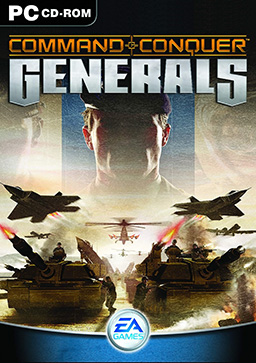
Command & Conquer: Generals is a real-time strategy video game and the seventh installment in the Command & Conquer series. It was released for Microsoft Windows and Mac OS X in 2003 and 2004. The Windows version of Generals was developed by EA Pacific and published by EA Games, the Mac OS X version was developed by i5works and published by Aspyr Media. The Mac OS X version was released by Aspyr on April 12, 2004. In the game, the player can choose from three different factions: the United States, China and the Global Liberation Army (GLA).

The Lord of the Rings: The Fellowship of the Ring is a 2002 action-adventure video game developed by WXP for the Xbox. It was ported to the Game Boy Advance by Pocket Studios and the PlayStation 2 and Microsoft Windows by Surreal Software. The game was published by Vivendi Universal Games under their Black Label Games publishing label. In North America, it was released for Xbox and Game Boy Advance in September, and for PlayStation 2 and Windows in October. In Europe, it was released for Xbox, Windows and Game Boy Advance in November, and for PlayStation 2 in December.

The Lord of the Rings: The Battle for Middle-earth II is a 2006 real-time strategy video game developed and published by Electronic Arts. The second part of the Middle-earth strategy game series, it is based on the fantasy novels The Lord of the Rings and The Hobbit by J. R. R. Tolkien and its live-action film series adaptation. It is the sequel to Electronic Arts' 2004 title The Lord of the Rings: The Battle for Middle-earth. Along with the standard edition, a Collector's Edition of the game was released, containing bonus material and a documentary about the game's development.

The Lord of the Rings: The Two Towers is a 2002 action hack and slash video game developed by Stormfront Studios for the PlayStation 2 and Xbox. A 2D Game Boy Advance game of the same name was made by Griptonite Games, a port to the GameCube by Hypnos Entertainment, and to mobile by JAMDAT. A version for Microsoft Windows developed by Ritual Entertainment was cancelled during development. The game was published on all platforms by Electronic Arts. It is an adaption of the 2002 film of the same name. Originally released in North America for the PlayStation 2 in October 2002, it was released in November 2002 for the Game Boy Advance, in December 2002 for the Xbox and GameCube, and in May 2003 for mobile.
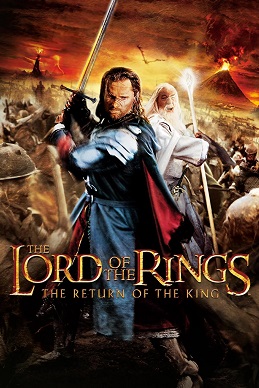
The Lord of the Rings: The Return of the King is a 2003 hack and slash action game developed by EA Redwood Shores for the PlayStation 2 and Windows. It was ported to the GameCube and Xbox by Hypnos Entertainment, to the Game Boy Advance by Griptonite Games, to mobile by ImaginEngine, and to Mac OS X by Beenox. The game was published by Electronic Arts. It is the sequel to the 2002 game The Lord of the Rings: The Two Towers.

The Lord of the Rings: War of the Ring is a 2003 real-time strategy game (RTS) developed by Liquid Entertainment and published by Sierra Entertainment, a subsidiary of Vivendi Universal Games. Set in J. R. R. Tolkien’s fictional Middle-earth, it expands upon the events of the War of the Ring as told in his fantasy novel, The Lord of the Rings.
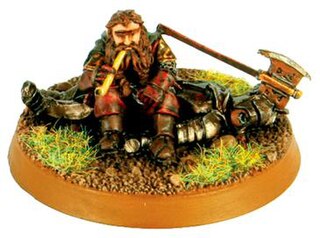
The War of the Ring was Games Workshop's annual summer campaign for 2005. The campaign was named after the eponymous War of the Ring in J. R. R. Tolkien's The Lord of the Rings, and was the first to feature The Lord of the Rings Strategy Battle Game as its wargaming system. The campaign allowed registered participants to play miniature wargames using special "regional rules" for any one of thirteen regions of Middle-earth, and to submit the results to the campaign website. The results were then added up on the website, contributing to the overall result of the campaign.
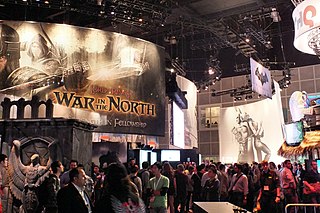
There are many video games that have been inspired by J. R. R. Tolkien's works set in Middle-earth. Titles have been produced by studios such as Electronic Arts, Vivendi Games, Melbourne House, and Warner Bros. Interactive Entertainment.

The Lord of the Rings: The Battle for Middle-earth II: The Rise of the Witch-king is a real-time strategy video game published by Electronic Arts, based on the Lord of the Rings film series based on the book, directed by Peter Jackson. The Rise of the Witch-king is the expansion to The Lord of the Rings: The Battle for Middle-earth II, which was published by the same company and released in 2006, for Microsoft Windows. The Rise of the Witch-king was released on November 30, 2006.

War of the Ring is a strategy board game based on The Lord of the Rings by J.R.R. Tolkien. The game was made by Roberto Di Meglio, Marco Maggi and Francesco Nepitello, first produced by Nexus Editrice (Italy), and is currently published by Ares Games.

In J. R. R. Tolkien's fictional world of Middle-earth, Mordor is the realm and base of the evil Sauron. It lay to the east of Gondor and the great river Anduin, and to the south of Mirkwood. Mount Doom, a volcano in Mordor, was the goal of the Fellowship of the Ring in the quest to destroy the One Ring. Mordor was surrounded by three mountain ranges, to the north, the west, and the south. These both protected the land from invasion and kept those living in Mordor from escaping.
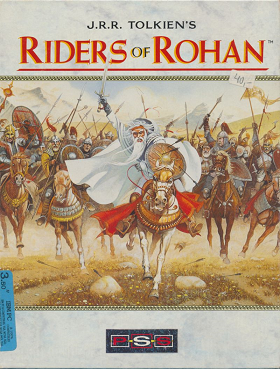
J. R. R. Tolkien's Riders of Rohan is a computer video game from 1991 based upon the fictional War of the Ring set in the Middle-earth world created by J. R. R. Tolkien, centered in The Lord of the Rings novels. The massive-scale simulation takes part in the realm of Rohan and the player controls the forces of Good during the onslaught of the forces of Evil, namely centered on the conflict with Saruman of Isengard. It was published by Konami and Mirrorsoft.

Middle-earth: Shadow of Mordor is a 2014 action-adventure video game developed by Monolith Productions and published by Warner Bros. Interactive Entertainment. An original story based on the legendarium created by J. R. R. Tolkien, the game takes place between the events of The Hobbit and The Lord of the Rings film trilogies. The player controls Talion, a Gondorian Ranger who bonds with the wraith of the Elf Lord Celebrimbor, as the two set out to avenge the deaths of their loved ones. Players can engage in melee combat, and use wraith abilities to fight and manipulate enemies. The game introduces the Nemesis System, which allows the artificial intelligence of non-playable characters to remember their prior interactions with Talion and react accordingly in subsequent encounters.
The geography of Middle-earth encompasses the physical, political, and moral geography of J. R. R. Tolkien's fictional world of Middle-earth, strictly a continent on the planet of Arda but widely taken to mean the physical world, and Eä, all of creation, as well as all of his writings about it. Arda was created as a flat world, incorporating a Western continent, Aman, which became the home of the godlike Valar, as well as Middle-earth. At the end of the First Age, the Western part of Middle-earth, Beleriand, was drowned in the War of Wrath. In the Second Age, a large island, Númenor, was created in the Great Sea, Belegaer, between Aman and Middle-earth; it was destroyed in a cataclysm near the end of the Second Age, in which Arda was remade as a spherical world, and Aman was removed so that Men could not reach it.
